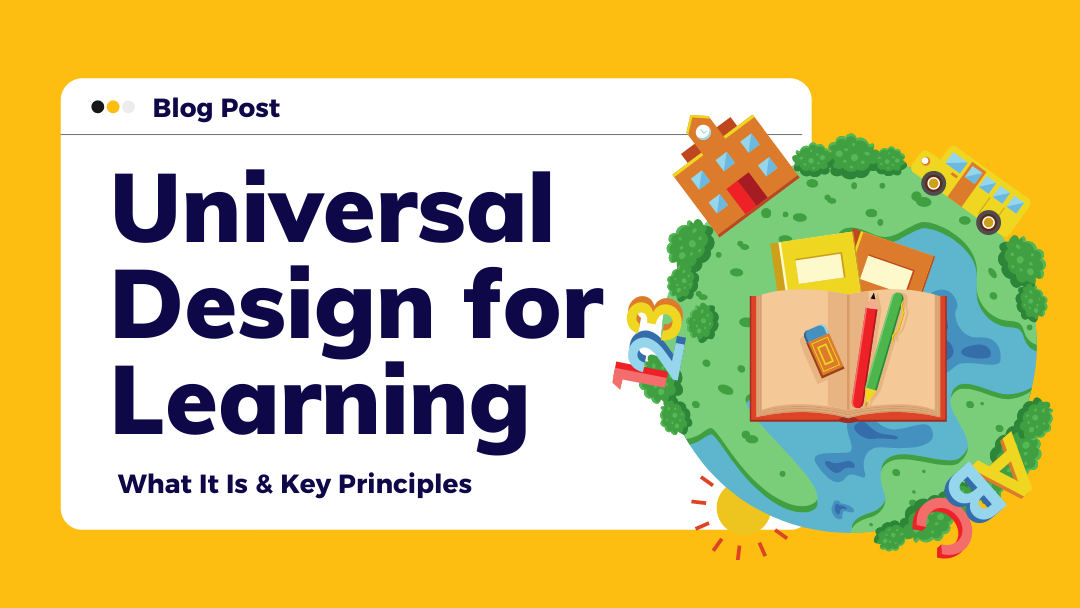 |
submitted by /u/cantdutchthis [link] [comments] |
Category: Chat
-
Rasa created a free Course on Conversational AI
-
Virtual Healthcare Assistant Army With Workbots

According to a recent report in the New Scientist, hundreds of thousands of people say ‘Good morning’ to Alexa every day. AI chatbots are everywhere and people are showing a huge interest in digital assistants. This could imply that chatbots will take over messaging applications someday across many business sectors. Healthcare is one such segment where we have seen limitless possibilities of growth. Healthcare assistants offer more than just information. They gather information through conversations and also analyse patients’ symptoms. This is possible because of Artificial Intelligence technologies and Natural Language Processing that help chatbots to converse in a more human-like manner.
According to the global tech market advisory firm ABI Research, AI spending in the healthcare and pharmaceutical industries is expected to increase from $463 million in 2019 to more than $2 billion over the next 5 years.

Virtual healthcare assistants can provide high-quality medical assistance in a very cost-effective way. AI Chatbots can help provide advanced patient care, improve patient experiences through virtual diagnosis and data analysis which in turn empowers patients to be more proactive about their health.
What is a Healthcare assistant capable of doing? Here’s how you can create an army of digital assistants!
- Consultation and advice
Digital healthcare assistance can consult with patients and give advice. A lot of common healthcare issues do not require doctors’ intervention. Chatbots can find a solution and answer patient’s queries by analysing symptoms through Artificial Intelligence. The main goal is not to replace doctors or doctors’ diagnoses but to provide timely basic medical aid.
- Managing prescriptions
Suppose a patient does not take medicines on time and often misses his dose. Just inform the chatbot about the name of the medicine, the number of times it has to be taken during the day and it will remind patients to have their pills on time.
Trending Bot Articles:
2. Automated vs Live Chats: What will the Future of Customer Service Look Like?
4. Chatbot Vs. Intelligent Virtual Assistant — What’s the difference & Why Care?
- Booking appointment
Chatbots can automate the booking process. It streamlines patient workflow, directing them based on expressed symptoms. Tasks like confirmation of appointments, rescheduling, termination can be done by bots speeding up transactional patient queries, thus freeing up receptionists to concentrate on patients coming through OPD (Outpatient Departments)
- Diet and exercise advice
In this age where diet and exercise play a major role in most people’s lives and being fit is the #1 priority, a chatbot can act as an assistant to track and advise patients’ dietary needs according to their physical capabilities. Apart from that, post-operative diet and follow-ups can also be done through chatbots.
- Symptoms checking and screening
Healthcare chatbots can screen patients on a massive scale via analytic insights. A healthcare bot can converse simultaneously with thousands of people anytime. No matter the magnitude of questions, healthcare bots can provide answers immediately. Checking of symptoms can enable chatbots to derive statistics based on algorithms and offer solutions to patients.
For example, a new mother would have a thousand questions regarding her baby. She would not go out of the way to ask her pediatrician to whether her baby is sleeping enough. These questions are relevant but do not require medical professionals’ assistance. A symptom checker can analyse the baby’s symptoms and derive a conclusion on whether the baby needs to be brought in for a check-up or provide solutions for treatment at home.
A study published in the Journal of Paediatrics found that 56% of websites provide inaccurate or irrelevant health-related information.
What does the future holds?
There is literally no end to what chatbots can do to enrich our lives. Digital health assistants can manage health very efficiently. It will get better as the chatbot continues to learn and evolve through patient interaction. Someday we might be able to share our medical reports with chatbots and they might be able to offer wise solutions or perhaps to even “trick us” into attaining good health with gamification nudges. AI-driven chatbots in healthcare are continually growing and promising care through streamlined systems.
Don’t forget to give us your 👏 !



Virtual Healthcare Assistant Army With Workbots was originally published in Chatbots Life on Medium, where people are continuing the conversation by highlighting and responding to this story.
-
5 Most loved Slack bots On Product Hunt

Photo by Muhammed Abiodun on Unsplash You can do a lot with Slack tool — from tracking your customers, to keeping tabs on company finances at a glance, to getting a daily digest of top news from around the web.
In this article, you’ll find 5 of the Product Hunt community’s most loved Slack apps. We believe these apps will help you in your growth.

1. EngageWith
With EngageWith, build a stronger, healthier & happier team. Recognize your peers on your channels right inside Slack & Microsoft Teams.
Make candid appreciation a part of the way you work, celebrate wins big or small and set up customizable rewards.
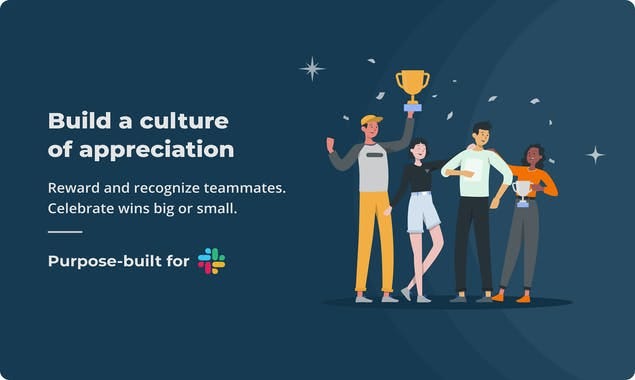
2. Trivia
Play fun games together with your team in real-time inside Slack & MS Teams! Trivia is the new way to connect with your team while playing exciting quizzes and games. Get summarised results at the end of every game.
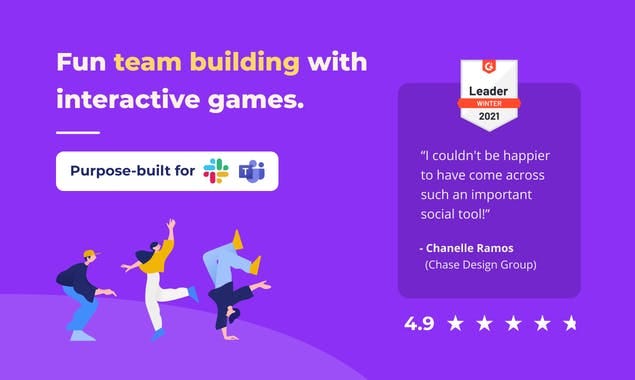
Trending Bot Articles:
2. Automated vs Live Chats: What will the Future of Customer Service Look Like?
4. Chatbot Vs. Intelligent Virtual Assistant — What’s the difference & Why Care?
3. Baremetrics
Send important updates from Baremetrics to your team’s Slack channels. You and your team can get daily, weekly and monthly reports on your most important metrics like MRR, LTV, User Churn and dozens more.
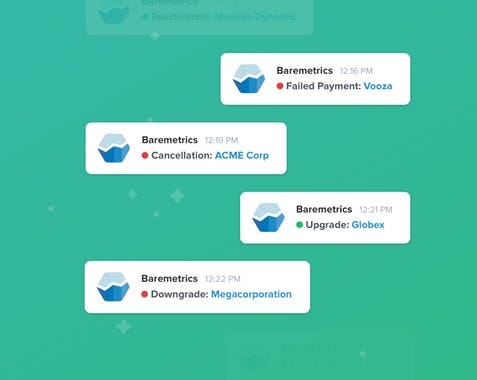
4. Workbot
Use Workbot across multiple teams in your company Bring the power of your apps into Slack. Eliminate the app hopping and get actual work done across all your teams and the apps they use.
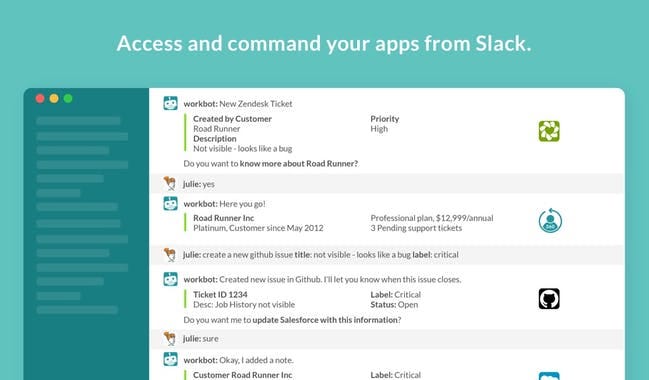
5. Carrot 2.0
Remote teams communicate differently. That’s why Carrot provides more space to share longer updates, and keeps threaded comments organized so it’s easy to catch up any time. Plus, you’ll always know who saw your update. Ideal for keeping remote teams in sync.
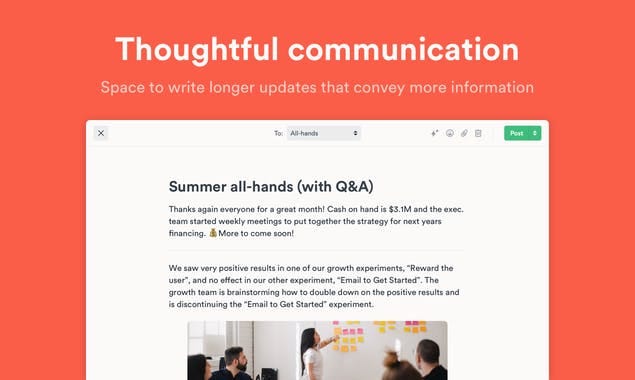
Don’t forget to give us your 👏 !



5 Most loved Slack bots On Product Hunt was originally published in Chatbots Life on Medium, where people are continuing the conversation by highlighting and responding to this story.
-
REAL ESTATE CHATBOTS FOR ACTIONABLE ‘CLOSING’
Real State Chatbots for Actionable “Closing”

When a potential buyer is looking to find a new home, he expects relevant answers, quick replies and 24X7 assistance. The buyer cares about someone who responds fast! Real estate agents are not only expected to answer calls promptly but also complete sale transactions, update listings, manage staff and market themselves. This sometimes makes it hard to keep up with inquiries that pop up on the website.
However, ‘In the game of Real Estate, every lead matters.’ How do you keep up with these inquiries? How will you manage clients?
Real Estate chatbot by Botspice, can hold a conversation with your leads and prospects. AI Chatbots can converse with potential new clients and help figure out where they are in their sales journey and how you can best support their needs at any given point in time. Websites usually have a registration form that buyers are generally disinterested to fill up. Therefore, getting information through conversations is the best way to handle clients.

What can Artificial Intelligence Chatbots do?
- Advertise available property.
Real estate chatbots can help advertise a property that is hot selling. It can also manage the availability of rental properties. Organizing property and providing what the customer expects through a chatbot will help a customer to purchase or lease a property with greater ease and convenience. Chatbots can display pictures and videos of the property to eliminate the hassle of sharing them repeatedly over emails and social media with prospective clients.
- Generate Leads even at non-business hours!
One of the major benefits of chatbots is their 24X7 availability. Real estate agents are often out of the office. They often rely on additional staff to answer calls and handle emails. In such a case, there could be a lack of consistency in answers or non-availability after office hours. Data shows us that almost 78% of buyers stick with the agent who answers them first. Business chatbots never take a break and can support multiple clients at the same time. By using real estate chatbots, agents can connect with prospects and continually engage them in the real estate sales process.
Trending Bot Articles:
2. Automated vs Live Chats: What will the Future of Customer Service Look Like?
4. Chatbot Vs. Intelligent Virtual Assistant — What’s the difference & Why Care?
- Log conversation data and understand prospects through an analytics dashboard.
To attract renters and buyers, agents must be able to provide in-demand properties to meet the expectations and budget of the customer.An agent must be well versed with the local real estate market as well in finding properties that match customer requirements. A fair amount of research is required that includes listing competitors, studying client demographics, searching local council, etc. An easy way to gather this information would be by launching a chatbot. Chatbots can collect information through multiple clients and help determine the target audience. Data gathered can also show which property is most searched for in the desired location and the client’s budget requirements. This information is crucial to tailor listings to better suit client’s needs.
- Provide an interactive sales experience
Chatbots can provide clients with pictures and videos of properties that they are interested in by providing a clear picture of what they can expect to see before scheduling a property visit. This helps develop an interactive sales experience and improve conversion rates.
In Conclusion
A real estate chatbot will never be able to replace a steely determined agent. However, an agent can deploy chatbots to concentrate better on building relationships with customers directly. If your company is a sole agent or a team, a chatbot will give you and your team a headstart in attracting clients and managing them strategically to increase conversion rates. Botspice provides you with ready access to NLP tools and technologies to design and train own Digital Assistant.
Don’t forget to give us your 👏 !



REAL ESTATE CHATBOTS FOR ACTIONABLE ‘CLOSING’ was originally published in Chatbots Life on Medium, where people are continuing the conversation by highlighting and responding to this story.
-
Universal Design for Learning: What It Is & Key Principles
Universal design can be found in services, products, and environments. It is most commonly found in products such as wheelchair accessible MRT gantries and stairs with slopes that are widely used by all kinds of people.
As its name suggests, universal design is when you design a product to make it accessible to everyone.
When it comes to education, universal design for learning plays a key role in providing an equal opportunity for all students to learn and succeed.

-
Why are Product Managers obsessed with CX platforms in 2021?
The most critical skill identified in top-performing product managers is their obsession with customers and their customer experience. In a single day, a product manager makes multiple decisions keeping their customers in mind, and some of these questions might look like –
What are the problems their customer is facing today? How to solve it? What is the best possible path to experience the solution? Can it be made shorter or optimized? Can they increase customer satisfaction while providing the solution? And lots more.
Their innate ability to understand customers’ pain points and build experiences to solve such problems often becomes the bread & butter for most businesses. Thus in today’s world, a Product Manager’s responsibility is not only about building features but also creating the best possible experience for customers right from the first interaction till throughout their lifecycle.

Why is Customer Experience critical?
When Bain & Company conducted a on customers of 362 companies, only 8% of them described their experience as “superior.” Yet 80% of the companies surveyed believed that the experience they have been providing is indeed superior.
The reason behind this disparity?
The average person interacts with >10x the variety of software they did a decade ago. With brands like Google & Amazon delighting their customers with their experiences — like Amazon one-tap payments, Google searches to find instant results; it increases consumers’ expectations even from other software today. And that’s the biggest challenge for our Product Managers to solve. Customers expect solutions quick & NOW with the most straightforward path that meets their needs. And with every interaction, the gap between customer expectations and experience spells the difference between customer delight and something less.
Trending Bot Articles:
2. Automated vs Live Chats: What will the Future of Customer Service Look Like?
4. Chatbot Vs. Intelligent Virtual Assistant — What’s the difference & Why Care?
What makes Product Managers obsessed with CX platforms?
Suppose a customer wants to interact with a brand in today’s world. In that case, they can either visit a website, download the app, connect on social media, send an email or directly call them up — and these are just a few of the options available for brands and customers to connect.
Product managers understand that in such an environment — simple, omnichannel & integrated solutions, where a platform that can talk to customers and other tools in the CX suite — will win the attention of the time-pressed customer. Individual platforms that cater to only a part of the problem will only offer incomplete or broken CX. Hence every business needs its Product Managers to embed unified customer experiences in their core applications to capture a more significant share of the customer wallet and drive value instantly.
However, most enterprise software companies fail to build the same experience their customer expects. They often choose to use legacy engagement solutions or build such solutions in-house, but not only does it require expensive resources but is also fragmented & unable to cater to omnichannel needs. Moreover, legacy solutions often fail to meet modern, and upcoming customer needs since the adoption of newer technology is low. This problem gets further amplified with business growth as customer inquiries, needs, and touchpoints keep increasing, but the response time and the quality of responses are not scalable anymore. Its cascading impact on customer satisfaction and related ROI metrics is what drives the obsession for Product Managers.
What do Product Managers want from a CX platform?
In 2021, there are a gazillion CX platforms available, but Product Managers want solutions that can meet customer needs whenever they want, wherever they want, while driving the highest satisfaction. Thus leading to their inclination towards Conversational AI-driven CX platforms. The critical capabilities that make Conversational CX a perfect match for every Product Manager’s needs are –
- Cater to customer needs 24*7 all 365 days of the year
- Ability to build seamless and unified customer experience across multiple channels like Web, Mobile apps, Facebook messenger, WhatsApp, Google Business messages & others
- Naturally understand what the customer is looking for and provide personalized solutions instantly
- Automate repetitive customer requests to avoid the burden of time & efforts it would require from humans
- Drive actionable CX insights using comprehensive real-time dashboards across the customer experience canvas
- Build CX journeys independently with low-code solutions that need minimum efforts but drive the maximum ROI
Haptik is one of the world’s leading Conversational AI platforms, having reached over 100 mn devices and processed over 4 bn conversations. Trusted by global brands, Haptik is the go-to choice for Product managers obsessed with the goal of improving customer experience.
Experience the Power of Conversational AI-driven Customer Experience
Interested to explore more or want to try out a chatbot of your own?
Don’t forget to give us your 👏 !



Why are Product Managers obsessed with CX platforms in 2021? was originally published in Chatbots Life on Medium, where people are continuing the conversation by highlighting and responding to this story.
-
New evidence Dialogflow website chatbots can be a critical part of your marketing mix.
Dialogflow chatbots for websites using Botcopy

Not all chatbots are created equal — but a Google Dialogflow and Botcopy stack can lead to a chatbot that checks all the boxes.
Chatbots have oft been overhyped in the past, and it’s important to separate the valid criticisms from the reflexive Luddite-isms. The fact is, big brands are saving piles of money and oceans of time by using intelligently deployed chatbots. A case in point is that Century 21, which recently increased lead generation while reducing the cost per lead, uses an intelligent bot on its website. Let’s take a look.
(But first, for a bit of context: at Botcopy we see a lot of bots. We like to think we know which ones work and which ones are nonsense. You might think from our name that we write copy for bots. We used to, but now we’re a SaaS that integrates Google AI bots into websites in a few clicks. We kept the name Botcopy, and we still see many bots and often help our SaaS customers smooth out the edges of their bot UX.)

Meet Mark Rollag, CEO of xtDirect, an outsourced global call center service for Century 21.
Century 21 is owned by Realogy, where the name of the game is getting leads for franchisees. Mark Rollag, CEO at xtDirect, had this to say:
“The results are amazing with this particular use case. Before launching a chatbot on the Century21.com site, we managed calls and live chats in the thousands. It’s a happy problem to have. But we were managing too many chats.”
Mark understood the problem — too many chats — and came up with a solution that instantaneously fields a request and creates that first touchpoint in a relationship.
“In my mind, it’s so simple. It’s a way to say, we’re glad you’re here.”
Once the user is engaged, the bot can adeptly find out what the user wants to do, gather the lead-generation info and forward it to the right broker nationwide, without human intervention. The value of this is obvious. Mark made some other happy discoveries along the way:
“The info we gathered can allow us to real-time adjust the marketing budget for the online ad spend, for example, who would have ever thought everybody would be moving from New York down to Florida? That’s the power of having this organized dataset being generated and stored by the bot. My agents don’t have to manually key in anything. The bot pulls the info needed and punches it through to the Google Sheet we use to organize the leads, which auto-sends to the right agent associated with the zip code.”
Trending Bot Articles:
2. Automated vs Live Chats: What will the Future of Customer Service Look Like?
4. Chatbot Vs. Intelligent Virtual Assistant — What’s the difference & Why Care?
The value of a lead
Mark explains that the value of a real estate lead is roughly one-third of the buy-side commission if you’re a licensed real estate agent, so basically, 1% of the house’s value is what a lead is worth.
“Leads are valuable, so we want to get the credit that we help generate the leads, and because customers are willingly entering their info, when the agent calls, the lead picks up because they don’t think it’s a robocall. So not only are we getting more leads, we’re getting better quality leads.”
A bot versus a form or live agent
One of the beautiful things about bots is users telling you whether they like the experience. Users will curse the bot out, tell it it’s stupid, we’ve seen it all. This kind of open data is marketing gold because once you have the transcripts showing where end users are getting frustrated, you can easily change the conversation flows to reduce those pain points. Soon your conversion rate is through the roof.
Mark explains:
“Many real estate companies, if they get a million site visits, they may capture two or three thousand leads. But we now know we can get 60%-70% conversion rates by adding the bot to the site and continually optimizing it after the reviewing the bot’s analytics.”
What makes a good bot?
The variables and use cases are endless, but here are a few guidelines:
We find that users are more likely to deal with a chatbot with a rich, custom front end, which can assist with a live chat handoff and has buttons, lists, carousels, videos, form components, and more. The Century 21 bot used a combination of buttons and forms, with natural language inputs and simple text responses, to personalize the conversation as much as possible. At the same time, we also keep it on “guard rails” with buttons that sort users into the proper conversational flows.
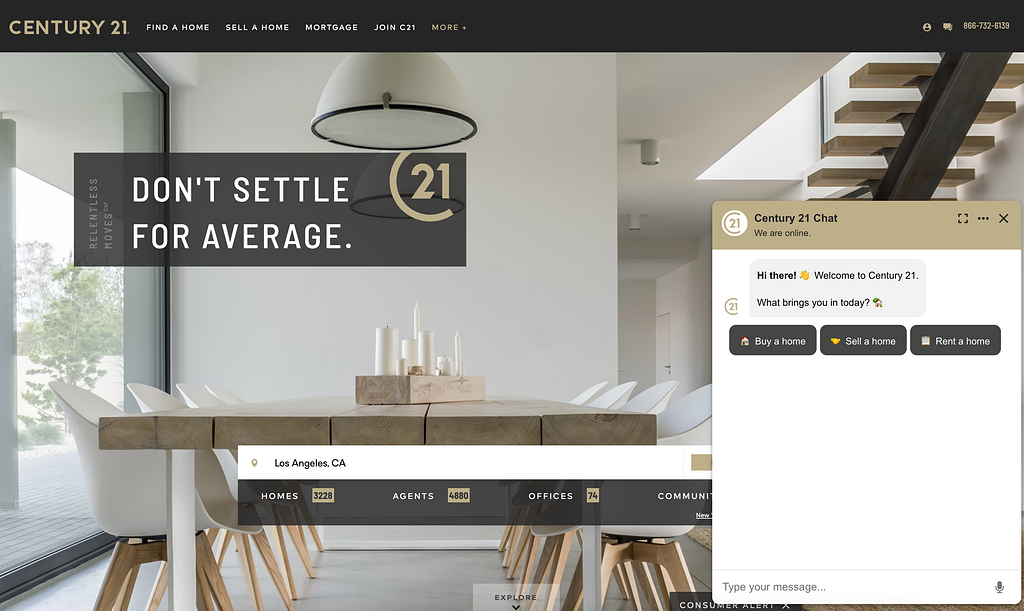
Moreover, good web bots should have a robust natural language understanding capability that lets users say or type questions.
And last but not least, the front-end web chat UI should look and feel branded and artistically tweaked to perfection, require no logins (unless you want it to), and meet the user on their terms.
If it can do all that, you have a killer automation machine on your hands that can radically cut costs and boost productivity.
With that part mastered, you can take it a step further with bots that can read the room, detect ref parameters and language browser settings, and know what page a user’s on so that the bot can say relevant things at the right time.
It can even authenticate users, access databases, and do high-value tasks previously reserved for humans only. A solid front end to your bot can help you cross the authentication divide.
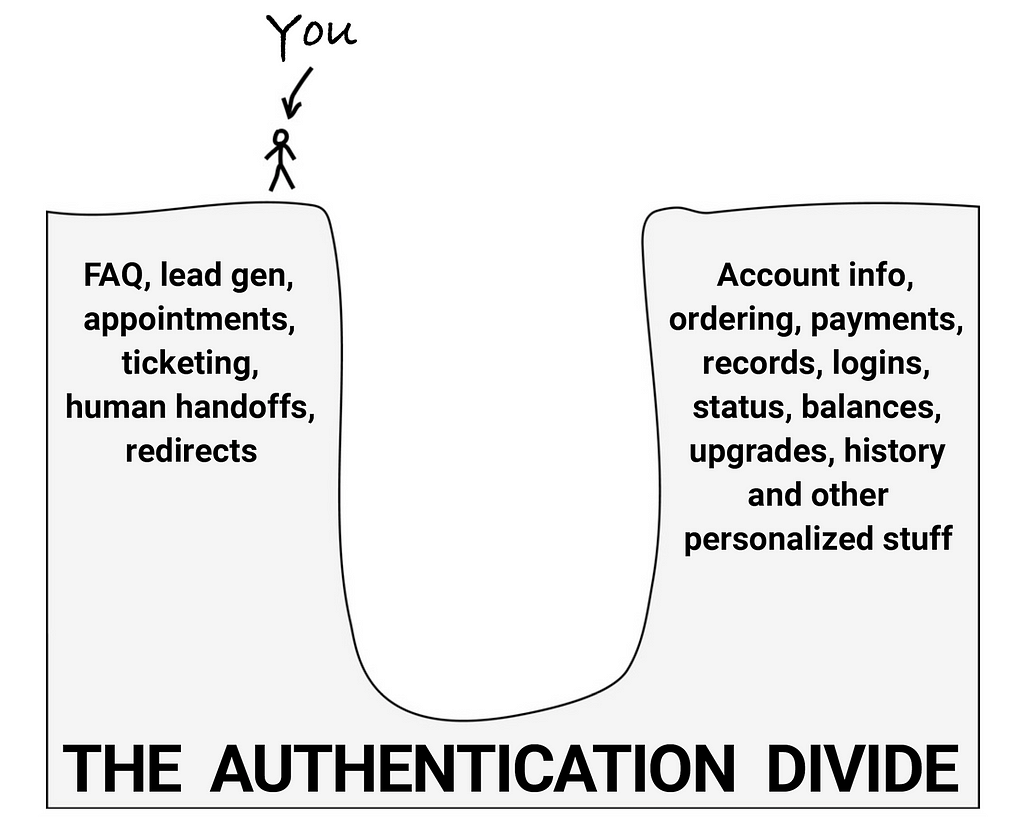
What this means for you:
You can do something similar to Century 21 with our help. You can test our software with a free trial, or look into our Bot Launch Package, specially designed for enterprise team members in charge of spearheading bot projects. Visit Botcopy to get started, or watch the video to learn more.
More resources:
The $200 billion problem no one in AI wants to talk about.
Riot Games’ chatbot built on Google Cloud Dialogflow & Botcopy achieves a 14% deflection rate.
Don’t forget to give us your 👏 !



New evidence Dialogflow website chatbots can be a critical part of your marketing mix. was originally published in Chatbots Life on Medium, where people are continuing the conversation by highlighting and responding to this story.



